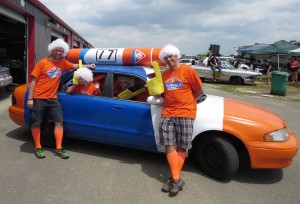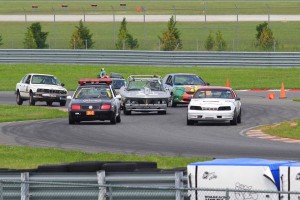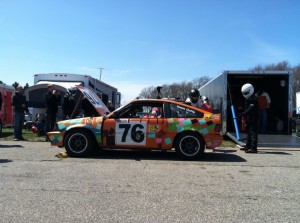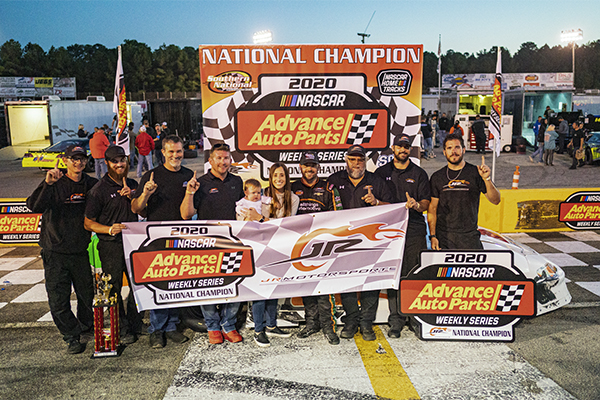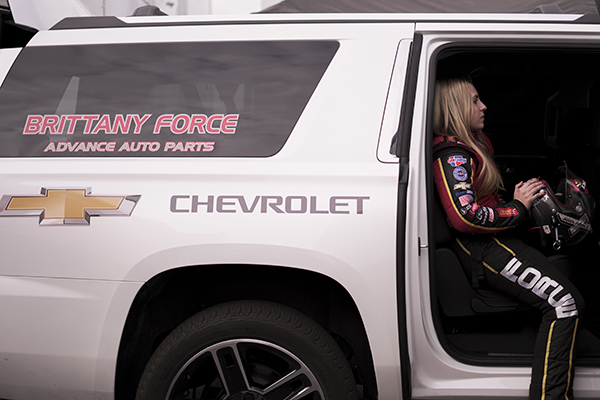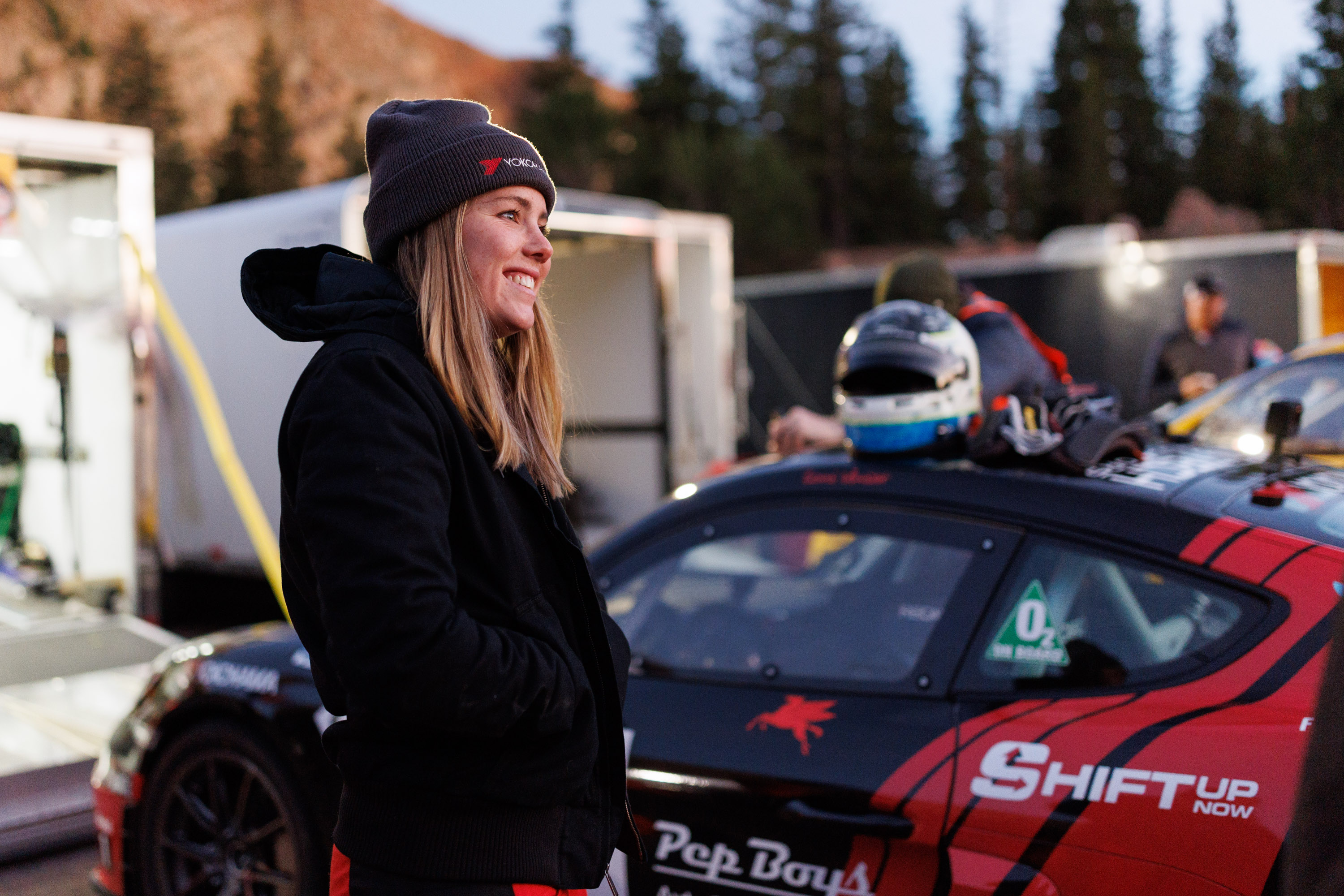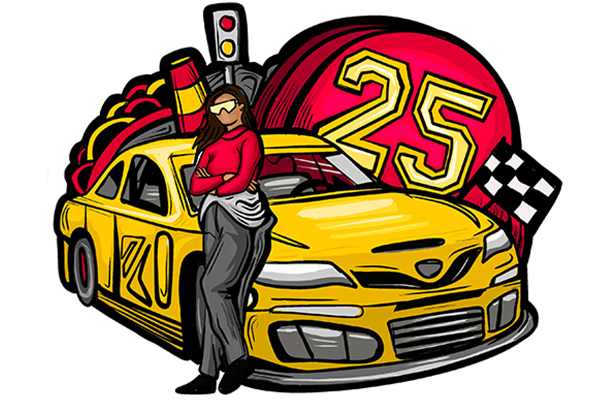Source | Phil Greden
What happens when “Halloween meets gasoline?” Or, phrased another way, what do you get when you mix a sports car event with elements of All Hallow’s Eve – and then a dash or two of Mardi Gras? The answer is . . . you get 24 Hours of LeMons, described as “endurance racing for $500 cars.” And, that’s “not just an oxymoron,” the race website reassures dubious site visitors. Instead, “it’s a breeding ground for morons.”
You’ve probably heard of the oh-so-prestigious French 24 Hours of Le Mans race, right? If so, then set aside everything you know about that race – and traditional car racing in general – and prepare to immerse yourself into a whole ‘nother world.
Who came up with this idea, anyhow?
Well, you can credit – or blame – longtime car journalist John “Jay” Lamm who, around January 2000, suggested that a friend of his (Martin Swig) organize a car race in which the vehicles must cost no more than $500. Swig followed through and, in June 2000, this event debuted in California. In what became the Double 500 Motor Tour, participants would “race” for 500 miles in the Bay Area in cars that cost less than$500. And, in the year 2000, that amount of money didn’t buy a whole lot of car.
Source | Eric Rood
This car is a beat-up BMW whose drivers are participating in their very first race: the Autobahn Country Club race in June 2013 Therefore, entrants needed to lower their expectations about what their dream race car would look like.
One participant, David Cammarano, came up with this guideline, published in the San Francisco Chronicle: “If I sat in it for 10 minutes, and it didn’t smell like somebody had lived there, then it was a contender.”
David had tough competition for that race, with seven other brave souls entering the fray – including Jay Lamm, who was able (at the very last minute!) to purchase a 1979 tan Alfetta sedan for his five hundred bucks. “It was the single worst car,” Jay laments, “that I've ever driven and, as you can imagine, that's saying a lot. The gearbox froze every ten minutes. It overheated. The guibo was shot. The suspension was so floppy and woozy that halfway through the event my dog Conway barfed all over the back seat. The registration tag, on further inspection, had been hand-done in colored paper and Sharpie.” Besides that, the seller of this Alfetta beauty drove an even harder bargain. He’d sell this car for $500 ONLY if Jay also carted away his crappy old dune buggy.
The fee to enter the first Double 500 race wasn’t high – just “your dignity” – and this fairly cheap but nevertheless incredible experience sparked in Jay the impetus for 24 Hours of Lemons.
Fast forward to 2006
That year, Lamm, along with two of his car show buddies, Nick Pon and Jeff Glenn, decided to introduce the 24 Hours of LeMons to the world. In this event, participants were once more limited to $500 in their car purchase; this time, though, the competition would take place on a racetrack. The next year, three events were held; the year after that, seven. Three years later, even more events were being held in multiple locales across the country, making race organizing and management a full-time job for its three founders. In fact, co-founder Nick Pons points out that, “in California, every race is full and we now need to turn people away.”
Nuts and bolts
Source | Nick Pon
New Jersey - 2013 For every car on the track, there are 4 to 6 people who take turns driving that particular vehicle around the track. Typically, one driver will race for 90 to 120 minutes, and then stop to fuel up. At that point, teams usually switch drivers. At the end of the race, whichever team has completed the most laps (minus whatever penalties they received) is the winner. Nick estimates that about 9,000 people have participated in LeMons racing, with a good percentage of them participating frequently. From younger to older, racers are both men and women, with males predominating.
“Lots of teams,” Nick explains, “are made up of a guy and three golf buddies who have no idea what they’re doing. And, on the other hand, there are also a fair number of accomplished racers.” The atmosphere is family friendly, with relatives often on the same racing teams, including father/daughter and brother/sister matchups. Judges classify the cars as A, B or C – or, as Nick says, as the “good, the bad and the ugly”:
- Class A: the fastest cars, ones that were good cars when new, such as a Miata or BMW
- Class B: originally decent cars, but never sporty, such as an Accord or any Saturn
- Class C: “cars that were awful from the get go, such as a Pinto or Chevette”
Drivers need to be careful on the track, because parts tend to fall off the cars and they often need to eat the rust, rather than the dust, from the cars that pass them. Then there are the hard lemons that spectators throw at the vehicles and all the havoc that they can wreak. Winners get paid – but in hundreds of pounds of nickels, coins that will probably be tossed through the cars’ broken windows.
Source | Amy Romano and Janet Raffa
“Somehow,” Nick continues,” racing cars as an activity has become super serious. Every other hobby has a pro version and a fun version. Bowling, for example, has professionals, and then there’s the guy with a pot belly. And now, people have a choice with racing, too. At LeMons, we simply bring a bunch of junk cars together and then sit back to see what happens.”
Stuff you need to know
The rules, according to Nick, are elegantly simple: you can spend up to $500 buying a car for the race, and money spent to fix any non-safety items – including work on the transmission and/or engine – goes towards the $500 cap. Funds put towards wheels, brakes, a roll cage, fire extinguisher and safety harnesses, though, are not included in the $500, because safety is paramount.
“The car just needs to be in good enough shape to get to the track,” Nick explains, “where each car gets a safety check, which is the only part of the event that is taken seriously. During this BS inspection, each driver gets to tell his or her story, while a judging panel tests the veracity of claims.”
Although the race operates on a word of honor system, drivers beware. Judging is based on gut feelings, with the judges empowered to assign a penalty lap for each $10 they believe was spent on a car that exceeds the $500 cap.
The long, strong arm of the law
Also known as Judge Phil, or the Residual Value Sage or the Chief Justice of LeMons Supreme Court, we bring you . . . Phil Greden of Denver, Colorado. As the chief judge of LeMons, Phil is responsible for choosing the other judges for each race; these other judges are typically people involved in LeMons who live in the vicinity of the locale of the current race (which is a fancy way of saying that the other judges at a California race are likely to be from California, and so forth). These judges have, according to Phil, two main responsibilities:
- To inspect and enforce the $500 build-cost limit during the pre-race inspections
- To keep order during the race itself
Phil also lets drivers know how much money they can spend between races to fix or upgrade their cars. Overall, he says, “I’m trying to ensure that as many racers as possible have as good a time as possible, while at the same time trying to keep them from getting obliterated in fiery crashes or crushed beneath falling transmissions.” Easy job, right, Phil? He disagrees. “If I let a cheated-up car get through the inspection and that team stomps everyone else, the other teams are sad,” he explains, “but if I bring the hammer down on a legit car that smells cheaty, that team is sad. I've had to learn to combine the good-cop and bad-cop roles.” Later on, you’ll hear more about some of the creative penalties imposed by Phil and his posse. When asked what type of racers thrives at LeMons, Phil describes them this way:
- One is the group of good friends who enjoy solving problems together, eating those big plastic barrels of Orange Dye #312 Cheez Puffs together, making junkyard runs together, and so on.
- The other is the kind of person who has always built weird projects in the garage and has finally found a venue in which his or her achievements are met with admiration instead of nervous, edging-away-in-discomfort glances.
- And, really, for guys who just want seat time in a fiercely competitive wheel-to-wheel road-race series, it's a chance to race without the irritating cliquishness of the more "respectable" race series.
Takin’ it to the streets
Advance Auto Parts decided to ask race participants what they thought of the event. That includes racing enthusiast Ray Muratore from New York City, who points out that the judges aren’t above a little bit of bribery.
What?!?
Bribery! What kind of bribery, you wonder? Well, according to Ray, anything from “lemon cookies to steamed lobsters.” Of course, Ray points out, because bribery is so widespread, the judges might typically receive nourishment from 100 different teams, giving them enough to feed all the workers – which gives the skullduggery a useful edge. “These bribes are practical, yes, and also in the right spirit for LeMons,” Ray says, “which is tongue in cheek.”
To get a better sense of the type of humor displayed on race day, check out this YouTube video (you gotta love the pink jacket on the big guy pushing the car!). Only one race in 2013 will actually be 24 hours, non-stop, and that’s on September 28th-29th in Houston, Texas. Other races feature a long session on Saturday and another long one on Sunday – but are not literally non-stop. And, let’s face it. How many cars worth $500 or less could drive 24 hours straight, anyhow? “Well,” Nick admits with a laugh. “Some teams do have problems.” When asked to quantify, he estimated that “75 to 80% of cars that enter the race end up with some issue.”
One car, Nick remembers, ran reasonably well for five hours before it stalled out. So, the racing team spent the next five hours fixing the vehicle – but, as the clock chimed the eleventh hour, that car was back in the thick of things. Another car, Nick says, didn’t even start until three hours before the race was completely over. “So, a totally flawless race, mechanically speaking?” he muses. “The odds of that happening are . . . let’s say: really low.”
Ray’s story
“I was totally alive! I was in a whole different world . . . and so . . . so focused. “ Remember Ray Muratore from New York City? You know, the guy who gave us the inside scoop about how to bribe the judges? Well, Ray had initially heard about the 24 Hours of LeMons in 2006, when the first race took place. He’d thought it was cool, but then forgot about it. In 2012, though, he saw news about a quirky race in England and recalled hearing about LeMons. Doing a bit of research, he discovered that it had grown substantially, so he and his brother-in-law committed to one another that they’d participate.
Real life interfered when the brother-in-law found out his wife was pregnant, and so he needed to back out of the race. Ray therefore “trolled on forums” and attended a LeMons race to check out the atmosphere. Then, in October 2012, Ray joined a team and raced in a New Hampshire event. Prior to this competition, Ray had only raced in go carts; so, on the first day, he was understandably nervous. On the second day, though, magic sparked. “I’d come out of a corner and made a right-hand turn that was really hot. I was drifting off, but was able to keep on the track.”
The next thing you know, Ray bought his own LeMons-appropriate car – a 1968 Ford Cortina – and signed up for multiple 2013 races. “I’ve already raced four times this year,” Ray says, “and will race again in October.” Ray believes that it’s the camaraderie that makes this race so appealing. “What’s amazing,” he says, “are the friendships that develop among the teams. If something unfortunate happens to a car, then everyone chips in and helps out – like what happened to a 1969 Rolls Royce. Before the owner of the car got his time driving in the race, someone crashed into the car and damaged it. Next thing you know, at least thirty people were by the car, asking if someone needed a welder and offering the use of their tools. They knew the owner hadn’t had a turn to drive yet, and so they wanted to get the car back on track.”
Ray names something else that makes this race so special – and that’s how participants use this fun activity to do good in the world. When, for example, people purchase lemonade at the race, funds go towards Alex’s Lemonade Stand Foundation to fight against childhood cancers; thousands of dollars are donated to this charity throughout the year, through lemonade purchases, outright donations – and in a third way, which Ray describes. “Let’s say that a driver drove off the track and the judges throw a black flag,” he explains. “They – the judges – may give the driver a choice of a penalty: to strap himself to the roof of his car and tell everyone what he did – or to give $100 to Alex’s Lemonade Stand Foundation. Chances are good that he’ll donate to the charity.”
Ray takes his generosity a step further. “Any time,” he says, “that someone pays to drive with me, I donate part of that money to fight leukodystrophy. If I win any money, all of that goes to the charity for leukodystrophy, too.” “So,” he concludes. “At 24 Hours of LeMons, we’re doing more than racing. We’re also giving back to the world.”
Eric’s story
“Most endearing are the personalities, remarkable people with whom you can’t help but feel a weird sense of community, because they are as strange as you are.” Eric Rood from Chicago first heard about LeMons in 2010, when he met a friend at a party who knew about the race. Before the night ended, the friend had talked Eric into looking for a car in which to compete. “Now,” Eric says, giving context, “I played video racing games, but I wasn’t too handy with a wrench. Fortunately, LeMons is very open to new people, new racers and new fabricators. Very inclusive. You’ll meet someone who didn’t know a metric set from a standard socket and, one year later, that same person can swap out brake calipers in ten minutes under race conditions. It’s definitely on the job training, like immersion therapy. You get your hands dirty and then it’s ready, set go!” Eric then raced in two 24 Hours of LeMons races before coming to two realizations:
- He loved the atmosphere and the people
- As a family man, he couldn’t afford it
“It’s the cheapest way possible to race,” he concedes, “but you still need to buy the car and have money left over for fuel and entry feels – and for, let’s face it . . . towing.” 24 Hours of LeMons was in his blood, though, so he started blogging about the events to “get a vicarious fix,” attending the races in the Midwest and using the Internet to gather information about races further from his home. He’s also served as a BS judge at a couple of races. “These races are intriguing,” he says. “You can’t even call them a sport. They are just their own thing. On the one hand, it involves real endurance racing with all sorts of compelling stuff that goes on. There are people who take the racing very seriously; others who take it seriously but also have fun; and still others who just want to have fun.” Eric points out that, with such as diverse group of participants, you can take whatever you want from the racing experience. Some, he says:
- Want to improve as a club-type race car driver – and you can do that at LeMons with cheap seat time
- Want to have an adventure because they’re never done anything like racing before; again, cheap seats
- Want to use the event as a canvas for their creativity, whether mechanical or for otherwise making a car look ridiculous
- Want to go to a party, cook up 60 pounds of bacon, drink beer – and then eventually notice, “Oh, wow. There are cars here!”
“What’s cool,” he says, “is that all of this is okay.” Eric recently provided a preview of a California race that took place over the September 14-15th weekend, making his predictions for the winners of each class. Advance Auto Parts was actually interviewing Eric while the race was ongoing, so we couldn’t ask how closely his predictions matched reality, but Eric was able to confirm that this was the biggest LeMons race to date, with “184 cars on the track at some point, and nearly 1,000 drivers participating over the weekend.”
Reading the comments on his blog provides insight into the prep work that goes into racing, such as this one: "Speaking of which, Resident Crazy-Man MDHarrell hit the road this morning. He's flat-towing said Racing Saab all the way down here from Seattle behind his nearly identical support/spare-parts-bin OTHER Saab 96. The goal is to get as far as he can before one blows up, then jump into the other to finish the trek. Worry about getting home after the checkered flag." Fingers crossed that he did.
Mike’s story
“LeMons is amazing. The most fun I’ve ever had in a car! It was like being in a video game and it exceeded my expectations ten-fold.” So says Mike Romano, member of the Awesome Joe Racing team. He’s from Delaware, with other members of the team living just outside of Philly. And, yes. These are the guys who bribed the judges with lobsters – and they’re promising another culinary delight, details highly classified, for next year’s race. (P.S. to Mike and other potential race entrants. Judge Phil gave us this inside scoop about his favorite bribes: “I just got a Jeep Tornado valve cover at the last race. That is going right up on my garage wall. I've also received some good tools as bribes, from guys that work at Snap-On and Mac Tools.”)
Source | Eric Rood
Team Gutty’s orange Honda CRX at Gingerman Raceway in April 2013 pauses for a routine fuel and driver stop. This team won Class B at the race and finished sixth overall. Back to Mike. As he shares in a blog post, here is how he became involved in LeMons: the owner of the racing team attended an event in 2012; he was so impressed that he headed out to find a “$450 BMW 325e with 266,000 miles on the odometer. It was ugly, rusty, and smelled funny. So essentially it was the perfect car to compete in such an event. A true hunk ‘o junk.”
As his blog post details, it took his team right up until the deadline to turn this “hunk ‘o junk” into something safe and drive-able while staying within the LeMons guidelines. And, what amazed Mike was this contrast: on the one hand, LeMons was a “big party that was super relaxed and comical.” On the other hand, though, the event was “incredibly well organized. From the registration system to driver signs up, logistics are a breeze. It’s well run. It’s fabulous. What’s great is that, while the organizers take safety seriously, they don’t take themselves seriously and are all smiles.” After the first day of racing . . . well, that’s when everyone really got to let their hair down. “I was in hysterics the whole time,” Mike says, “as we danced into the night.” Danced, that is, alongside other racers who were dressed in bikini bathing suits and, ah, interesting wigs; or pink bunny suits; or as prisoners or pirates – or whatever else their creative minds had conjured up.
Equally as imaginative are the penalties dreamed up by the judges, who go by this golden rule: if something happened, then it’s all your fault. Someone hits your car? Well, then! Why were you there in the first place? “Two guys,” Mike remembers, “crashed twice, so the judges duct taped the guys together and required them to walk around telling everyone that they were bad drivers. It’s a fun way to enforce that, at LeMons, there needs to be super safe driving.” He also recalls a poignant event, when a team drove a mid-80s Rolls Royce. “This car was slow,” Mike says. “It was lethargic. It didn’t belong in the race at all. Therefore, it did belong and, out of respect, everyone slowed down when going around this unique car.”
LeMons going legit?
The New York Times reported on this phenomenon in July 2013, highlighting the Homer Simpson car and mentioning a few other creative designs, such as the ‘A-Team’ van, a few ‘Animal House’ Deathmobiles and even a plane-car loosely based on the Spirit of St. Louis (if Charles Lindbergh had been an underachieving ground-dweller with low expectations about where he was going in life).” The Washington Post chimed in that same month, sharing what four dreamers with LeMons stars in their eyes packed for their first race: “a loaded RV, a cargo van, a U-Haul trailer, a pickup truck, a spare motor, an engine crane, a jackstand, a full set of $150 high-performance racing tires (plus two spares), four fireproof racing suits and helmets, assorted power tools, a couple of laptop computers, a WiFi hotspot, a barbecue grill and a cooler full of steaks, chicken, eggs and thick-cut bacon.” What’s missing? If it’s you, then here are answers to frequently asked questions about the 24 Hours of LeMons. There isn’t a whole lot of 2013 season left, but there is enough time if you’re willing to put the pedal to the metal:
- September 28-29, MSR Houston
- October 26-27, New Hampshire Motor Speedway
- November 2-3, Road America
- December 7-8, Sonoma Raceway
If you’ve already participated in a LeMons race – or plan to – please leave us a comment below. Thanks!


